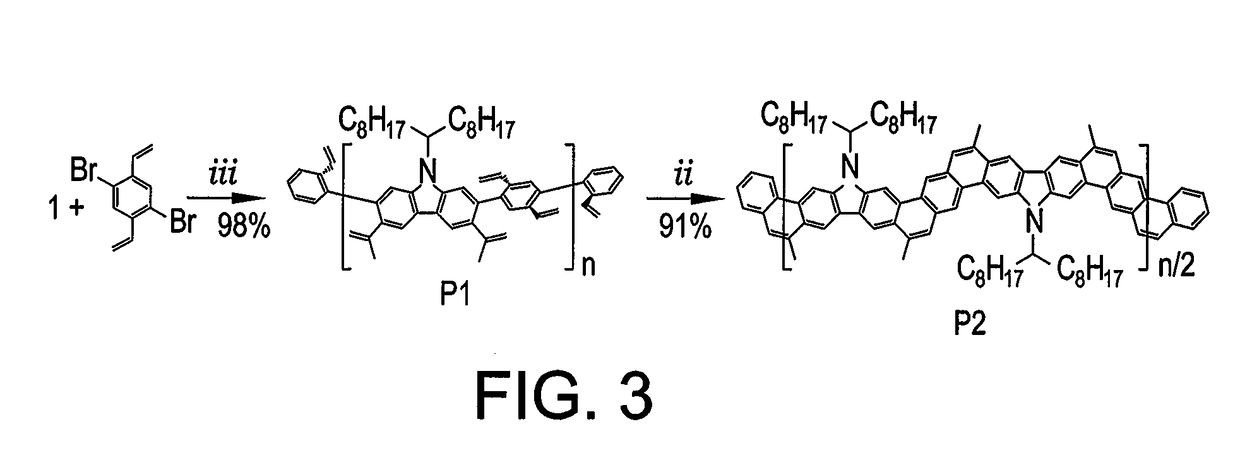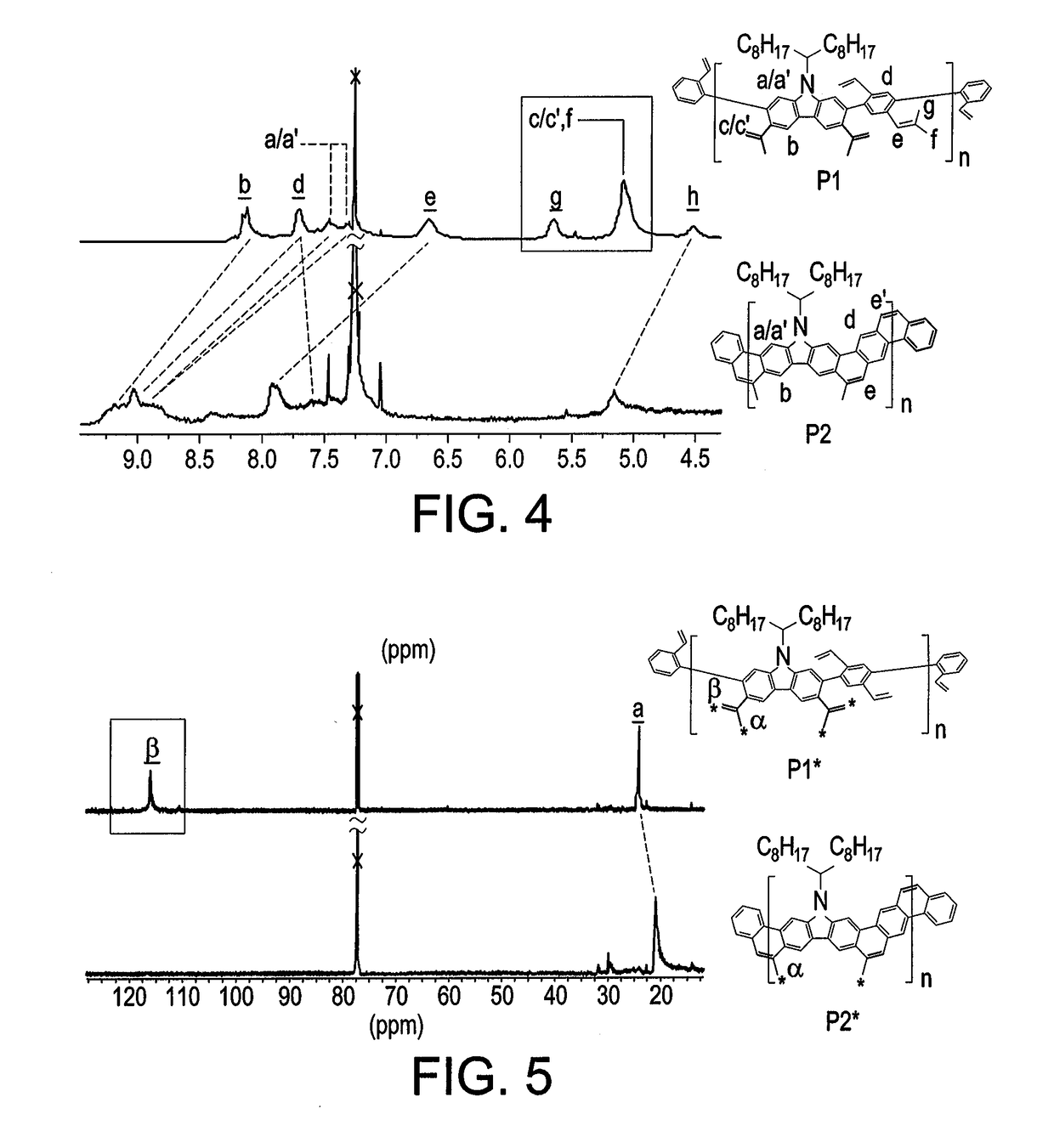Organic semiconductor polymer
a semiconductor polymer and organic technology, applied in the field of ladder polymers, can solve the problems of difficult synthesis of a well-defined ladder polymer, and achieve the effect of reducing the cost of synthesis and improving the efficiency of synthesis
- Summary
- Abstract
- Description
- Claims
- Application Information
AI Technical Summary
Benefits of technology
Problems solved by technology
Method used
Image
Examples
example 1
Synthesis of Polymer P1
[0031]To a 100 mL Schlenk flask was added precursor 1 (1.03 g, 1.40 mmol), 1,4-dibromo-2,5-divinylbenzene (0.40 g, 1.40 mmol), Pd(PPh3)4 (0.16 g, 10 mol %), K2CO3 (1.16 g, 8.40 mmol), aliquat 336 (Starks' catalyst; 0.65 mL, 0.35 mmol), and several crystals of BHT under N2. Degassed toluene (40 mL) and water (8 mL) were added and further degassed 3 times by freeze-pump-thaw. The reaction mixture was stirred at 100° C. for 24 h in dark, before it was cooled down to room temperature. 2-Bromostyrene (0.77 mL, 5.60 mmol) was added into the flask, and the mixture was stirred at 100° C. for 24 h. After 24 h, 2-vinylphenylboronic acid (1.73 g, 11.2 mmol) was added into the flask, and the mixture was stirred at 100° C. for another 24 h. The resulting product was precipitated from methanol, filtered, and washed with acetone. The solid was dried under vacuum to afford P1 (0.84 g, 98%, Mn¼ 10 kg mol1, PDI ¼ 2.78 by SEC). P1 was further purified by preparative recycling SE...
example 2
Synthesis of Polymer P2
[0032]To a 100 mL Schlenk flask was added P1 (120 mg, 0.20 mmol) and Grubbs' second generation catalyst (8 mg, 5 mol %) under N2. Subsequently, degassed toluene (12 mL) was added, and the reaction mixture was stirred at reflux temperature. Immediately, another portion of Grubbs' second generation catalyst (26 mg, 15 mol %) in degassed toluene (8 mL) was added for 4 h using a syringe pump. After that, the reaction mixture was stirred for an additional 2 hours at reflux temperature before cooling down to room temperature. The resulting product was then precipitated from methanol and filtered. The product was further washed via Soxhlet extraction with acetone and hexane, before extraction with chloroform. The chloroform solution was filtered and condensed under reduced pressure. The desired product was precipitated from methanol. The precipitate was filtered and dried under vacuum to afford P2 (100 mg, 91%, Mn=15 kg mol−1, PDI=2.00 by SEC).
PUM
| Property | Measurement | Unit |
|---|---|---|
| concentration | aaaaa | aaaaa |
| temperature | aaaaa | aaaaa |
| length | aaaaa | aaaaa |
Abstract
Description
Claims
Application Information
 Login to View More
Login to View More - R&D
- Intellectual Property
- Life Sciences
- Materials
- Tech Scout
- Unparalleled Data Quality
- Higher Quality Content
- 60% Fewer Hallucinations
Browse by: Latest US Patents, China's latest patents, Technical Efficacy Thesaurus, Application Domain, Technology Topic, Popular Technical Reports.
© 2025 PatSnap. All rights reserved.Legal|Privacy policy|Modern Slavery Act Transparency Statement|Sitemap|About US| Contact US: help@patsnap.com



